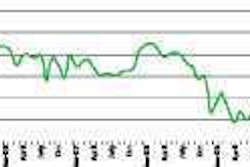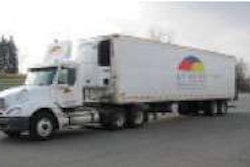A fresh start in 2011

During the CCJ 2010 Fall Symposium last month, a distinguished panel of fleet executives from American Central Transport, Celadon and Prime, Inc., offered their insights on challenges and opportunities facing the trucking industry in 2011. As 2010 draws to a close, a number of new regulations likely will have profound changes on the way shippers and carriers conduct business.
Chris Hines, executive vice president of sales and marketing for Celadon, says collaboration between carriers and shippers will have to change in the new marketplace with tightening capacity. “Being freight-friendly is going to be a necessity,” he says. “If you’re not friendly to your carriers, it’s going to be very difficult to find a truck.”
Tom Kretsinger, ACT’s president and chief operating officer, says what makes the industry’s emergence from this downturn unique is a new business mentality. “In this recession, for the first time I heard industrywide talk about shrinking fleets,” he says. “That is a rational business decision to right-size your business. That’s new in trucking.”
The changing dynamics between shippers and carriers was a common thread throughout the discussion of electronic onboard recorders, the driver shortage, potential changes to the hours-of-service rules and Comprehensive Safety Analysis, all of which will reduce carrier capacity further.
“If you’re not friendly to your carriers, it’s going to be very difficult to find a truck.”
First and foremost, shippers will have to change their carrier qualification process in light of CSA and assess their risk tolerance. “Before, plaintiffs attorneys couldn’t get through the truck corporation – it took the primary liability if there was an accident,” says Robert Low, president and founder of Prime, Inc. “Now, if that trucker is unsafe and there was negligent entrustment, there’s going to be a price to pay if [shippers] don’t use a qualitative measure to select motor carriers, and I think that’s positive.”
The increased use of EOBRs among fleets undoubtedly will put carriers and drivers under the enforcement microscope. But fleets are realizing EOBRs also are a good way to uncover inefficiencies in the shipping process. “There’s a lot of low-hanging fruit to increase your profitability even before you raise rates just by utilizing your time properly,” says Kretsinger. “In the future, we’re going to spend a lot more time talking about time than miles. If we can connect the processes between the shipper and truck line, we’ll achieve a lot of productivity.”
Hines agreed, adding that increased scrutiny to hours-of-service will impact how carriers will charge for detention. “We have to think about how much time does a load take, not just how far it is,” he says.
“ ‘So much a mile’ doesn’t mean anything until I know a number of factors, including how much time am I going to be occupied on that load. The driver is soaking up the inefficiency when the receiver, shipper or possibly the carrier is wasting the driver’s time.”
One of our features this month (“A line in the sand,” page 54) examines the topic of negotiating higher rates and getting rid of unprofitable business. Just a year ago, such an article would have been considered heresy by most amid the soft freight market. As the pendulum swings back in favor of carriers, fleets that get customers to buy in to their role of improving efficiency will be better positioned for success in 2011 and beyond. n
EDITOR’S NOTE
To see excerpts of the panel discussion from the CCJ 2010 Fall Symposium, go to www.ccjdigital.com and check out our FleetSpeak video series. Smartphone users can follow the instructions to the right and scan the Mobi Tag to see the video on their mobile device.
Jeff CrisSey is Editor of Commercial Carrier Journal.
E-mail [email protected] or call (205) 248-1244.












